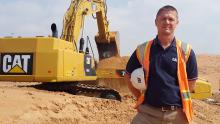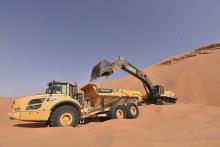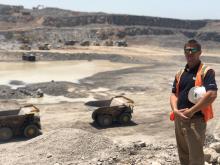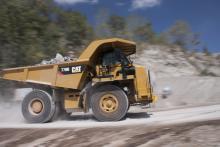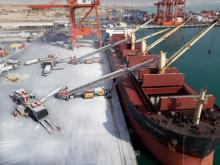
Encouraged by the success of COVID-19 vaccination programme and recovery in oil prices, the Middle East and North Africa (MENA) nations awarded various infrastructure projects valued at around US$156 billion in 2021.
The trend continued as the US and European Union imposed economic sanctions on Russia which invaded Ukraine in February this year. With the ban, Russia’s oil and gas did not reach global markets resulting in a spurt in crude prices benefiting the oil-exporting nations in the region.
According to BNC Projects Journal, the largest project intelligence database in the Middle East and Africa, the Gulf Cooperation Council (GCC) construction market alone in the MENA region is estimated to be $1.6 trillion, with over 21,000 active projects at the end of Q1 2022.
The report said Saudi Arabia doubled its new scheme announcements in the quarter, contributing 56% towards total project announcements in the GCC. Driven by the mega industrial facility by Foxconn, the Saudi Arabia industrial sector grew by 29% year-on-year (Y-o-Y) and drove the GCC Industrial sector to register 11% Y-o-Y expansion.

Saudi Arabia also registered 9% Y-o-Y expansion in terms of the overall project market supported by the major expansion in the utilities and the oil and gas sector. This led the GCC utilities sector to record 16% Y-o-Y growth.
“The overall story of construction is not as good as one would expect with giga projects splashed across the media and seemingly on the horizon, but nor is it as bad as crisis storylines would have you believe,” says Avin Gidwani, CEO of Industry Networks, publisher of the BNC Projects Journal.
“We have a COVID-gap of around 24 months in the project development cycle and you will experience this painful delay depending on which stage you play at in the cycle of construction. The good news is that the region’s new project cycle appears to be kicking in again and high oil prices will fuel it to go quicker.”
In Egypt, the construction market has gathered paced due to the execution of several projects including the new capital city, Cairo monorail project, and the Iconic Tower. As political stability returned, tourism picked up and oil prices increased, the government undertook economic reforms to deliver more projects.
The World Bank estimates the Arab world needs $100 billion every year for a reliable, strong, secure, and resilient infrastructure. Conflicts and wars have amplified this need, with the destruction of roads, buildings, and water, electricity, and communication networks in many countries. Syria, for example, saw the loss of an estimated $117.7 billion in housing and infrastructure in 2017.
In an interview with Asharq Al-Awsat, Navid Hanif, director, Office for Financing for Sustainable Development at the United Nations, said that the MENA region would need to spend at least 8.2% of GDP to achieve infrastructure goals by 2030. The average spending on infrastructure over the past decade has reached just 3% of GDP, with financing coming mostly from the public sector.
“With the population in the region expected to increase by more than 40% over the next few decades, and with increasing industrial demand, the region will need to invest more than $100 billion annually to maintain and build the infrastructure to serve the growing communities and cities,” Hanif said.
The new investments need to focus on making the infrastructure more resilient as large parts of the Arab world are in harsh climate zones, he adds.
Energy transition
As a follow-up to the UN Climate Change conference meetings, the six GCC countries – Qatar, the UAE, Saudi Arabia, Oman, Qatar, Bahrain – as well as Egypt and Turkey, are among the nations which pledged to reduce carbon emissions by 2070.
The GCC countries have announced renewable energy (RE) projects worth billions of dollars. They are even planning to produce and export green hydrogen to other countries. At present, the installed capacity of the MENA region’s RE projects is below 3 GW, but plans are underway to increase it to 98 GW by 2050. In fact, close to 40 GW are expected to be produced by developing clean technologies by 2025.
WCA’s call
As cement is one of the prime raw materials for these projects, the World Cement Association (WCA) said this would be an opportunity for the MENA region’s cement producers to take the lead and embark on their decarbonisation journeys to cut emissions and save on operational costs, including energy and fuel.
In fact, Dubai-based consulting group A3 & Co, which is a WCA member, estimates that there is potential for local companies to reduce their CO2 footprint by as much as 30% with no investment required.
At present, the number of companies and factories in operation has reached 171, with 32 additional cement mills. The share of the MENA region in global cement production is 15%.
WCA CEO Ian Riley says that there has been a lot of discussion in Europe and North America about decarbonisation roadmaps for the cement industry, and good work has been done to start on this journey. However, 90% of the world's cement is produced and used in developing countries; to impact overall industry emissions, we must include these stakeholders, he said.
“Cement companies in the region have some low-hanging fruit to take advantage of, which will lower costs at the same time as reducing CO2 emissions. At WCA, we have a number of programmes that can help them realise this opportunity,” Ian Riley adds.
Demand for aggregates
With construction activity at its peak, there is a great demand for both limestone and gabbro in the GCC countries, according to Gary Martin, senior market professional for heavy construction and quarry industries, Caterpillar.
Martin says the two main drivers of the quarry and aggregates industry in recent years have been the demand for aggregates in the region and a high quantity of produced materials exported outside to Qatar, Bangladesh, and India, to use in steel manufacturing and infrastructure projects.
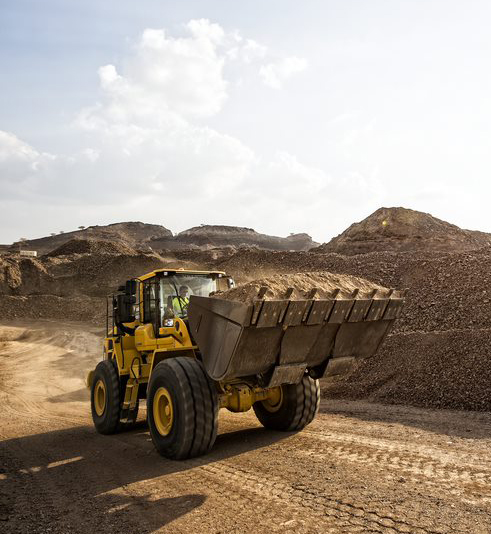
“Some of the limestone in the region has the correct chemical base that the steel works require for different applications and for the cement industries, roads and infrastructure projects.
“There are many projects such as Etihad Rail and the construction of offshore oil & gas exploration islands in the UAE where there is demand for aggregates. Even the real estate sector needs more aggregates as several private developers are constructing massive projects in the Emirates.”
With Saudi Arabia pushing forward with its 2030 vision to diversify some of their income away from oil and gas to the tourist industry, many megaprojects are starting or are within very close scope of starting, explains Martin. Projects range from building new zero-emission megacities supplied by green energy to luxury resorts on the Red Sea.
“Each project is valued in multi-billions of dollars and require new roads, airports, ports, and concrete for infrastructure, which will increase the demand for aggregates from crushing plants, and concrete and cement factories.
“In Saudi Arabia, the biggest demand for aggregates is from cement factories and cement products in addition to the megaprojects and there is growth in the housing market requiring all products for new housing projects within the Kingdom.”
Echoing similar feelings, Ilkay Fidan, commercial manager for Market Area Middle East, Volvo Construction Equipment (Volvo CE), says with the development of megaprojects in the Gulf region, they expect the demand to increase gradually in 2022 and 2023. “We have already seen demand increase since July 2021. Exceptional oil prices are the main driver for the construction boom in the Middle East.”
Fidan notes that demand for aggregates in the Middle East is partly influenced by its young population’s desire to diversify the economies from oil and gas revenues. Government infrastructure spending and sustainability-linked projects were other key demand drivers, he explains.
Safak Tugut, commercial manager for Market Area Africa at Volvo CE, says the demand in North Africa will continue to increase except in Algeria. In Morocco, public spending will continue to support growth in fixed capital formation, which will converge to its historical average following the 2021 surge.
“By tripling its allocation to the Mohammed VI Fund from $1.41 billion to $4.44 billion, the Moroccan government will continue to issue debt to fund the development of capital-intensive projects, such as the Dakhla Port in Rabat, which has an estimated cost of $1.28 billion, and the 3,800 km high-voltage direct current transmission line between Morocco and the UK, worth $25.7 billion which are due by 2027,” he points out.
The instability in Algeria is still ongoing but in the coming years, its economy will benefit from elevated hydrocarbon prices as authorities will have more fiscal space to stimulate economic growth, notes Tugut.
However, there is little demand for recycled aggregates within the construction sector except on some remote road construction or widening projects where material is difficult to transport, and one may find the paving teams recycling the existing material as the first sub-base.
“Recycling isn’t that common in the construction industry. For road paving, it can be found as the recycled material is used to build up the first base course of material under the finished grade,” Caterpillar’s Martin said.
Demand for construction equipment
Demand for construction equipment has been on the rise in the GCC region, says Martin. The most popular excavators among quarry operators are Cat 349, 352 and 374 as they offer a low cost per ton.
“In the Northern Emirates in particular, the Cat D9R dozer is a very popular machine because of its weight and ripping capabilities.

“While Cat 966 medium wheeled loaders are commonly used in the yard to load the finished materials on road trailers and to load the hoppers and smaller crushing plants, the Cat 980 medium wheeled loader is also used to load the road trailers in some of the larger and busier quarries and at the face in the smaller quarries as they are equipped with a larger bucket.
“The Cat 988K is found in two different applications. In some of the larger or super quarries within the Northern Emirates they are yard loaders as the continuous fleet of trailers come into the yard to take the finished material to the port for exporting. The Cat Payload onboard scale system provides on-the-go weighing to assist operators with hitting precise load targets which help maximise productivity.”
Volvo CE’s Fidan says that while GCC customers still want conventional machines, attention is likely to be increasingly paid to sustainable products that can reduce carbon footprint in the entire production process.
Tugut says it is a similar trend among North Africa customers, where quarry operators and aggregates-processing firms have long favoured strong, reliable equipment with high production and low fuel consumption. Volvo L150H, L180H and L220H wheeled loaders and Volvo EC350D, EC380D, EC480D and EC750E crawler excavators are all particularly popular, he highlights.
Reliance on technology
In addition to the machines themselves, quarry operators rely on technology and support. Cat Product Link is very useful to monitor fuel usage and theft. Information such as location, productivity, idle time, and diagnostic codes are also available through the online web applications. Connectivity is available through either cellular or satellite.
“The back-up service from the dealership is always critical in a quarry and we work very closely with our customers to provide the support they need as the more efficient the service support, the more efficient the quarry business is since a lot of equipment is in continuous operation,” Martin says.
Future
Caterpillar’s Martin says that from a GCC quarry- and aggregates-operations perspective, high oil prices equate to increased production costs. “With this in mind, we anticipate far stricter monitoring of site operations will come into play to maximise production efficiency.”
Regarding commercial opportunities for Caterpillar in Saudi Arabia, Martin says they vary by region. “Our focus is supplying the lowest cost per tonne solutions to the cement and quarrying industry and providing cost effective equipment to support the crushing process.”
“Within the many regions of Saudi Arabia, there are different demands on aggregates, which drives different production requirements. The equipment serving the industry ranges from the Cat D11T to D9R dozers, loading excavators are typically the Cat 349 and 352 models. In some areas, the 395 too.
“In addition, the Cat 992K and 988K wheeled loaders are perfectly matched to load the 777G to 775G off-highway trucks. Quarries with a lower output use the 980 wheeled loader and 770 off-highway truck or the 966L wheeled loader in combination with the Cat 745 articulated truck.”
As far as Volvo is concerned, the company has been adapting to supply chain challenges in the Middle East and North Africa and being alert to potential changes in regulations.
“We are launching a CO2 reduction programme to reduce carbon footprint for conventional loading and hauling units soon. This will be a step-by-step approach to help customers realise their own unique goals towards carbon neutrality,” says Tugut.
He believes that Volvo CE and other off-highway equipment manufacturers will benefit as countries emerge from COVID-19-pandemic-induced disruption, with pent-up unit demand addressed and governments’ infrastructure spending increased, partly to meet goals linked to supporting the younger generations and sustainability. Furthermore, Tugut says the switching of economies from being oil-dependent to focusing on non-oil income will create more unit-sale opportunities.
Sustainability trends to continue
Louise Collins, UAE country director, project and development services at JLL, a leading professional services firm specialising in real estate, investment management and development consultancy services, believes sustainability trends will continue to gather momentum in the long term as the GCC and wider world's construction industry moves towards greater digitialisation and the decarbonisation of real estate assets.
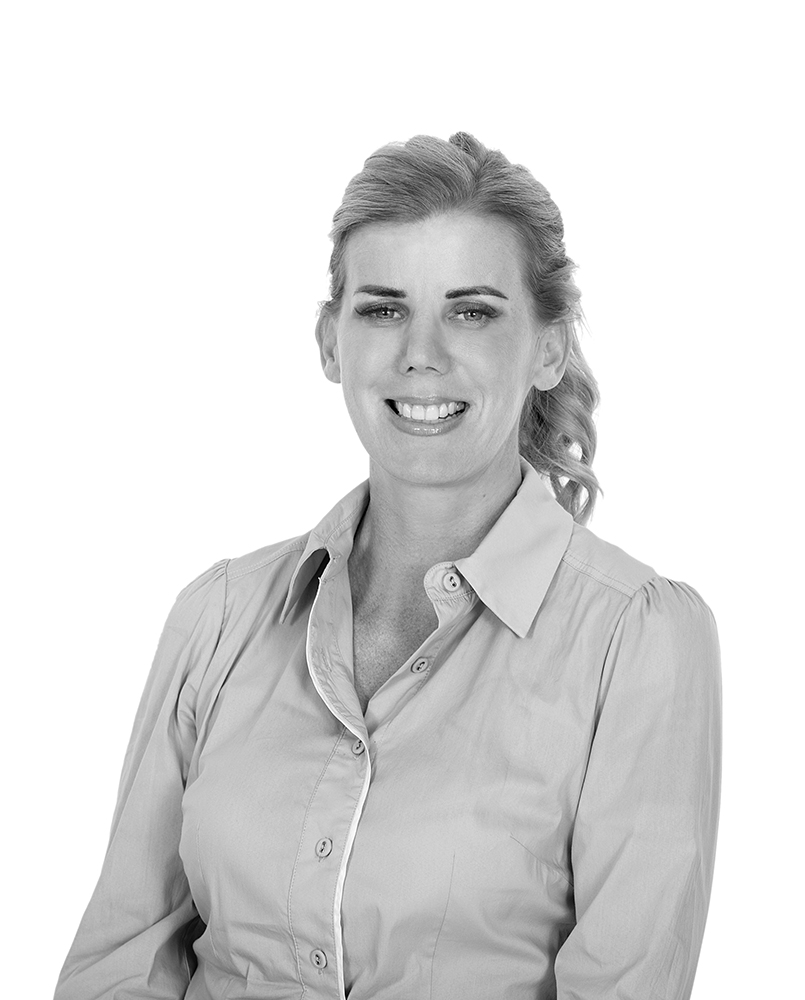
She notes that an estimated $9.2 trillion is expected in global capital spending on low-carbon equipment by 2050. A considerable amount of the current investment is focused on infrastructure-based technologies such as renewables, hydrogen, and industrial process recovery.
“On the building side, the focus is on everything from carbon-free concrete and recycled steel to the most advanced heating and cooling energy systems, geothermal heating and even carbon-capture technology,” says Collins.
“Sustainability is a continuing trend within the construction sector, specifically relating to the recently announced net-zero carbon commitments. There is still a big push for digitisation across the construction industry, and we also see an increasing interest in modular construction.”

